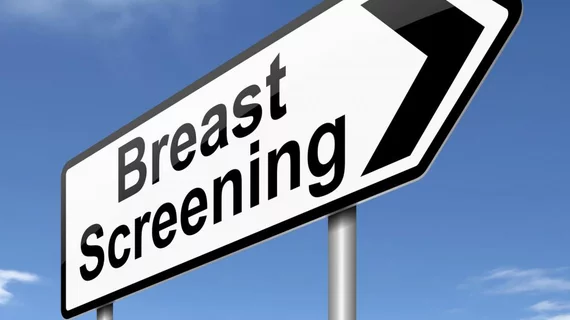American Society of Breast Surgeons shares breast cancer screening recommendations
All women 25 years old and older should undergo a breast cancer risk assessment, according to a new position statement published by the American Society of Breast Surgeons (ASBrS). Annual mammograms, beginning at the age of 40, are recommended if women have an average risk of developing breast cancer. If the risk is greater, annual mammograms and supplemental imaging are recommended.
In addition, the ASBrS emphasized the effectiveness of digital breast tomosynthesis (DBT), also known as 3D mammography.
“Where available, 3D mammography is the preferred sole modality for women with an average risk for breast cancer,” according to the statement. “It is also important to note that most current 3D mammography units result in no greater radiation exposure than traditional 2D units.”
When taking that initial first step of undergoing a risk assessment, the ASBrS said the woman’s family history, her prior history of atypical hyperplasia or lobular carcinoma in situ and her prior history of chest or mantle radiation therapy between the ages of 10 and 30 should all be taken into consideration. Genetic testing may also be needed, if she meets certain criteria.
If the woman is over the age of 30 when the risk assessment occurs, her breast cancer risk should be estimated using the Tyrer-Cusick model or “a comparable validated model including similar factors.”
The ASBrS included information about breast cancer outcome disparities as well, noting that “African American women, for example, face a disproportionately high risk of breast cancer mortality.”
“These screening recommendations for the overall diverse population of adult women represent an opportunity to minimize breast cancer disparities through earlier detection of disease in all women,” according to the statement.
The position statement also details some of the potential harms of screening mammography for women between the ages of 40 and 49.
“These potential risks include false-negatives (resulting in false reassurance), false-positive (abnormal findings on imaging resulting in additional medical interventions and anxiety), exposure to radiation, and over-diagnosis (i.e., the concept that some extremely indolent cancers might be detected that pose no threat to life and that would never have been detected in the absence of screening),” according to the statement. “Despite these potential disadvantages, the ASBrS supports the use of annual screening mammography beginning at age 40 for women with average risk.”
The American College of Radiology (ACR) has come out in favor of these new recommendations.
"Catching more cancers early by starting yearly screening at age 40–rather than less frequent or later screening–increases the odds of successful treatment and can preserve quality of life for women," Dana Smetherman, MD, chair of the ACR Commission on Breast Imaging, said in a prepared statement. "We are pleased that ASBrS has reaffirmed their support for this most sensible approach."
The ASBrS position statement was developed on April 10, 2019. The group’s board of directors approved the recommendations.

